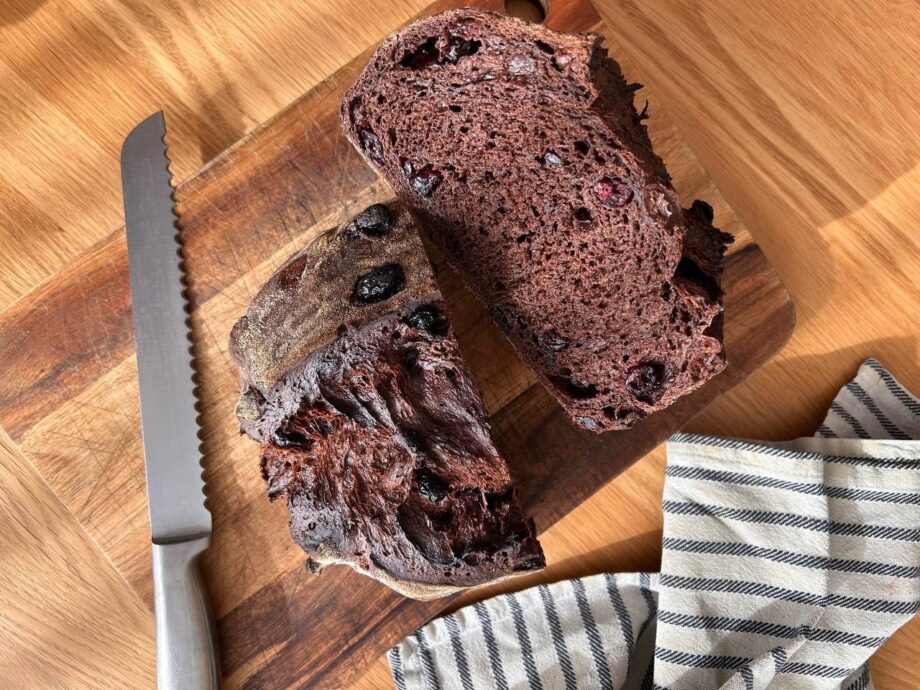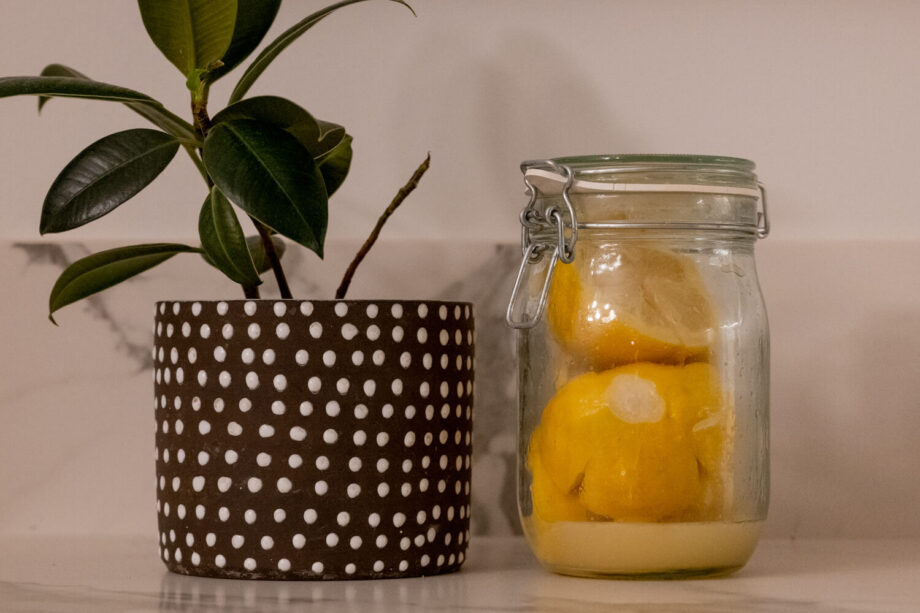This post is part of my ongoing series documenting various baking experiments. Rather than providing a comprehensive guide, I’m sharing the story behind these flavor explorations – similar to my previous post about lacto-fermented lemon bread.
I frequently encounter chocolate and cherry sourdough bread recipes, but the combination never particularly appealed to me. My interest was piqued, however, when watching videos from Proof Bread where they mentioned adding coffee to this classic pairing. Despite loving coffee as a beverage, I typically dislike it as a food ingredient – which, paradoxically, made me curious to experiment.
While searching for dried cherries at the supermarket, I realized I wanted something less sweet and more tart to balance the bitter cacao. Cranberries seemed like the perfect alternative.
For recipes like this, vanilla makes an excellent addition as it enhances existing flavors while adding depth:
“When it comes to enhancing the flavor of dishes, vanilla is a game-changer. Its unique properties and rich taste make it a valuable addition to a wide range of recipes. Vanilla not only intensifies existing flavors but also adds depth and complexity to the overall taste experience.” – Every Last Recipe.
For the coffee component, I used Swiss Water decaf from Kokomo, my favorite local roastery. I chose decaf specifically to prevent my young children from becoming overly energetic after enjoying a slice.
First attempt
Here’s my initial recipe:
- 100g sourdough starter at peak
- 18g salt
- 850g bread flour (I use Veski Mati T550)
- 100g cocoa powder
- 650g water
- 40g brewed coffee
- 15g vanilla paste
- 200g dried cranberries
The dough was extremely stiff and difficult to work with – almost like pasta dough. I added an extra 40g of water during the first fold. It seems the 100g of cocoa absorbed as much water as 200g of flour would.
Despite the challenges, the end result was mind-blowing and unlike anything I expected. I immediately fell in love with this bread. It’s versatile enough to be enjoyed as a dessert with jam or other spreads, paired with salmon or ham, but it’s truly at its best eaten plain. The bread is completely satisfying on its own.
The cocoa aroma and flavor are prominent but not overwhelming. The cranberries contribute both sweetness and tartness. Surprisingly, I couldn’t detect any coffee flavor despite its inclusion.
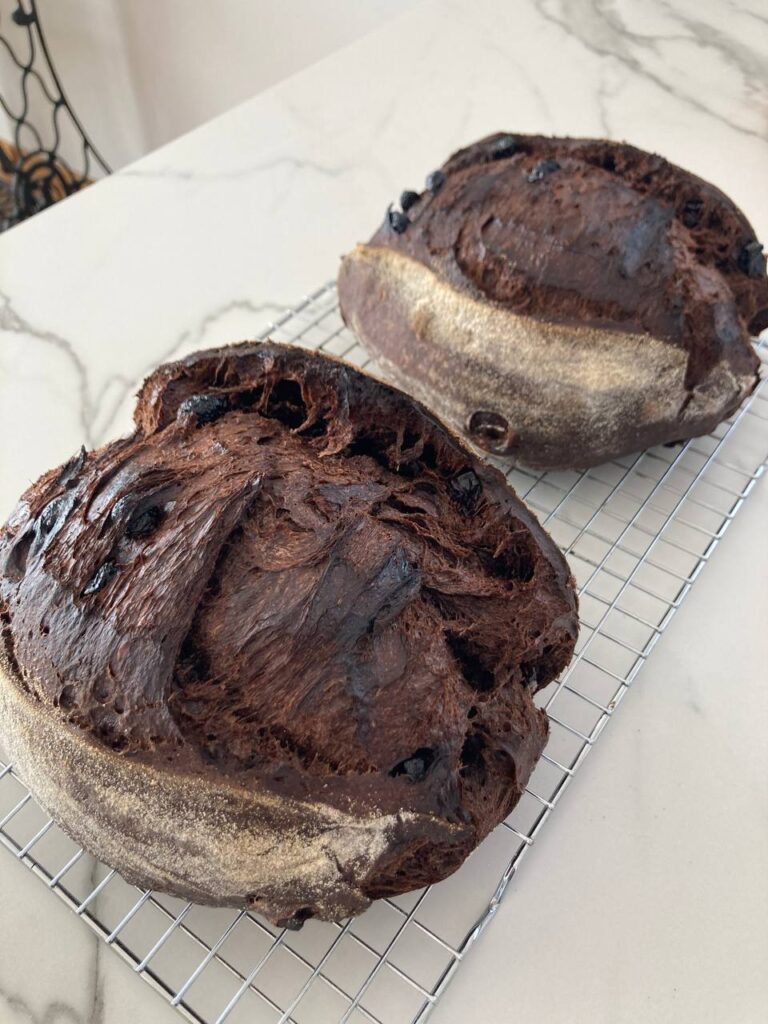
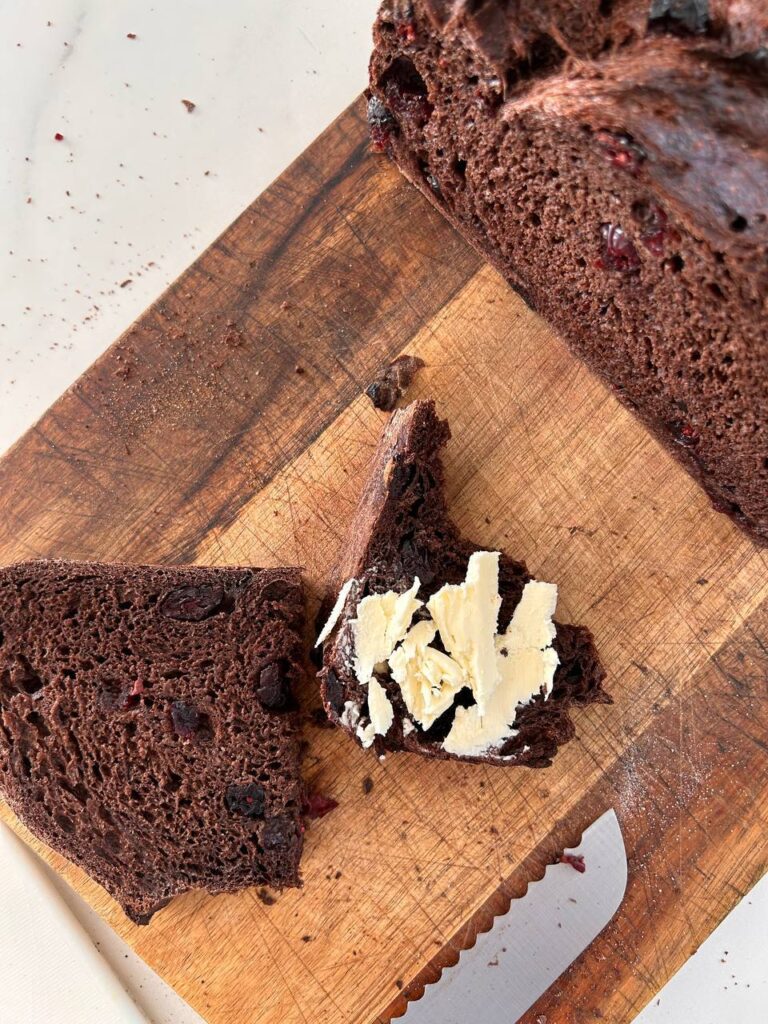
Second attempt
Based on my findings, I made another experimental batch with these modifications:
- Increased water from 650g to 700g
- Increased coffee from 40g to 60g
- Added 2g of cardamom
The dough was much easier to handle, though it took longer to develop gluten. Instead of the usual 3 sets of folds, I needed 5 sets. As with the first attempt, I couldn’t detect any coffee or cardamom in the finished bread.
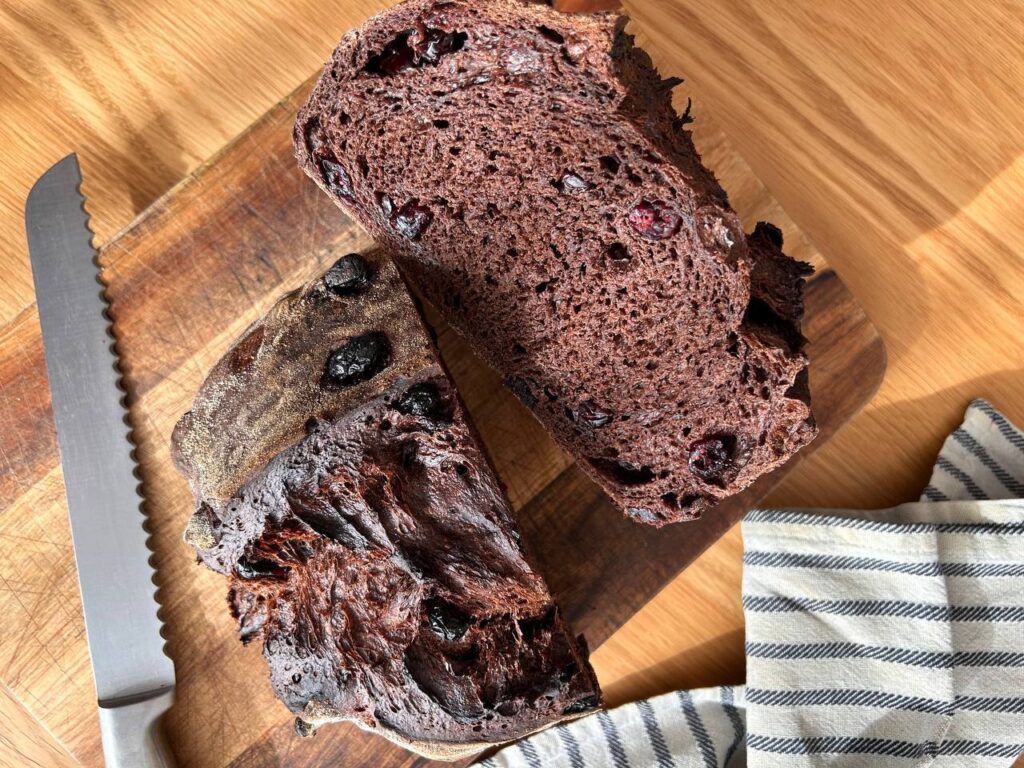
Next steps
I’ll definitely continue refining this recipe, as I want to incorporate subtle coffee notes. For my next attempt, I plan to:
- Reduce cocoa powder by 10g (down to 90g)
- Increase coffee to 70g and brew it stronger
- Replace cardamom with a mix of black and pink peppercorns, which I think will complement the other flavors better than cardamom
Until next time!
